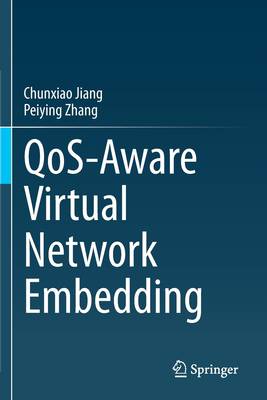
- Afhalen na 1 uur in een winkel met voorraad
- Gratis thuislevering in België vanaf € 30
- Ruim aanbod met 7 miljoen producten
- Afhalen na 1 uur in een winkel met voorraad
- Gratis thuislevering in België vanaf € 30
- Ruim aanbod met 7 miljoen producten
Omschrijving
As an important future network architecture, virtual network architecture has received extensive attention. Virtual network embedding (VNE) is one of the core services of network virtualization (NV). It provides solutions for various network applications from the perspective of virtual network resource allocation. The Internet aims to provide global users with comprehensive coverage. The network function requests of hundreds of millions of end users have brought great pressure to the underlying network architecture. VNE algorithm can provide effective support for the reasonable and efficient allocation of network resources, so as to alleviate the pressure off the Internet.
At present, a distinctive feature of the Internet environment is that the quality of service (QoS) requirements of users are differentiated. Different regions, different times, and different users have different network function requirements. Therefore, network resources need to be reasonably allocated according to users' QoS requirements to avoid the waste of network resources.
In this book, based on the analysis of the principle of VNE algorithm, we provide a VNE scheme for users with differentiated QoS requirements. We summarize the common user requirements into four categories: security awareness, service awareness, energy awareness, and load balance, and then introduce the specific implementation methods of various differentiated QoS algorithms. This book provides a variety of VNE solutions, including VNE algorithms for single physical domain, VNE algorithms for across multiple physical domains, VNE algorithms based on heuristic method, and VNE algorithms based on machine learning method.Specificaties
Betrokkenen
- Auteur(s):
- Uitgeverij:
Inhoud
- Aantal bladzijden:
- 401
- Taal:
- Engels
Eigenschappen
- Productcode (EAN):
- 9789811652233
- Verschijningsdatum:
- 5/12/2022
- Uitvoering:
- Paperback
- Formaat:
- Trade paperback (VS)
- Afmetingen:
- 156 mm x 234 mm
- Gewicht:
- 576 g

Alleen bij Standaard Boekhandel
Beoordelingen
We publiceren alleen reviews die voldoen aan de voorwaarden voor reviews. Bekijk onze voorwaarden voor reviews.









